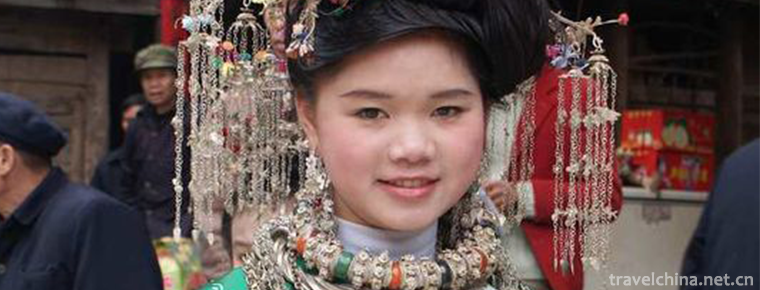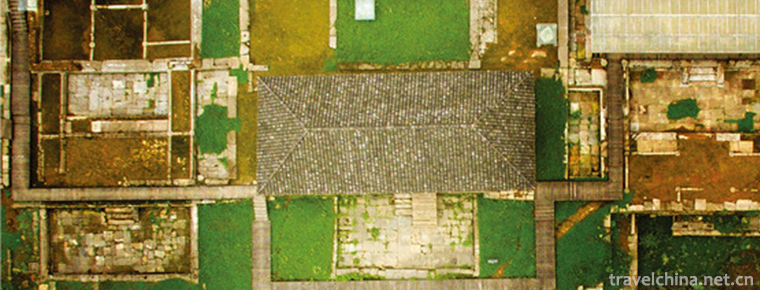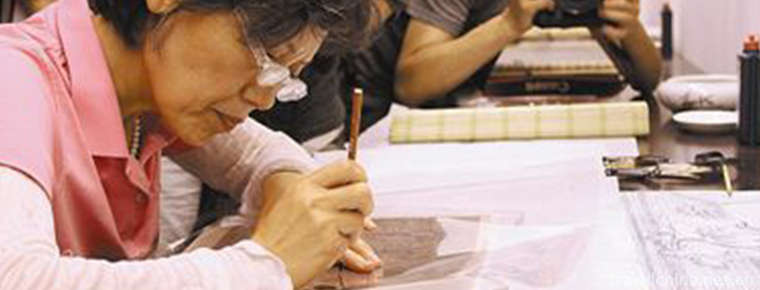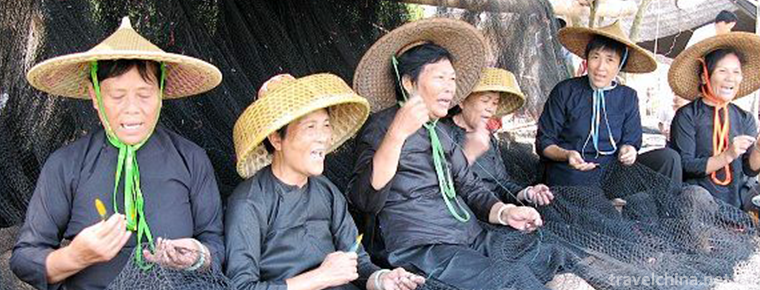2019-01-13

- By ChinaWiki.net
- Chinese Edition
- 2019-04-28
Dong minority clothing
Dong women's clothes vary in various styles, styles, decorative parts, patterns, hairstyles and handkerchiefs. They usually wear casual clothes, pay attention to practical use, pay attention to decorative aesthetics when dressing, simple and luxurious complement each other. According to the characteristics of the whole Dong women's clothing, Dong women's clothing can be divided into three styles: tight skirt, loose. T-shirt and trousers.
On November 11, 2014, Dong costumes were approved by the State Council and listed in the fourth batch of national intangible cultural heritage list.
Clothing features
Dong people are divided into South Dong and North Dong. The costumes of South Dong people are exquisite. Women are good at weaving and embroidery. Dong brocade, Dong cloth, flower-picking and embroidery are very distinctive. Women wear collarless cardigans, skirts and cuffs with elaborate horsetail embroidery. Dragon and Phoenix are the main patterns, with water cloud pattern and flower grass pattern. Short pleated skirts are worn underneath, feet are covered with warped shoes. Hair buns are decorated with rings, silver hairpins or trays. Longwufeng's silver crown is adorned with multi-layer silver necklaces and earrings, bracelets, waistdrops and other silver ornaments. Dong women in Sanjiang wear long-skirts and short skirts. Their long gowns are large collar-to-skirt style, with exquisite embroidery at the collar and cuffs, without buttons on the skirts, open in the middle, revealing embroidered embroidered bibs, blue cloth-pleated skirts and embroidered legs, flower shoes, buns on the head, decorating flowers, wooden combs, silver bracelets, etc. Festival wears blue collarless clothes, apron black skirts, lace-lined skirts, a sky-blue pocket at the waist, blue and white ribbons at the back, matched with red ribbons. Men's clothing is blue cloth bald head, collar-to-skirt, belt-tied, jacket without buttons, long trousers, leggings, straw shoes or barefoot, skirts and other embroidery. The horse-tail fan of the Dong nationality is a first-class embroidery. The style is old, the embroidery work is refined, the pattern is rigorous, the color is rich, fully demonstrates the Dong nationality woman's wisdom and the superb skill.
Dress Adornment
Headwear and silver ornaments are the most exquisite ornaments for women in Pingqiu. They are good at long hair, tie hair trays with red-headed ropes and wrap black gauze pads on their heads. Silver hairpins, silver combs, silver discs, silver crowns on their heads, gold and silver rings on their ears, two groups of silver buckles on their necks, two groups of bows on their necks, five necklaces of different sizes, five silver chains on their breasts and a silver lock on their wrists to suppress evil spirits. Wear silver bracelets, square bracelets and so on. Silver jewelry includes carved dragons, painted phoenixes, birds, insects, flowers and grass and other patterns, which are made by local craftsmen. This dress is simple and complex, shining silver, jingling.
Color characteristics
Most Dong people wear self-woven, self-woven and self-dyed Dong cloth. They like green, purple, white and blue. Black-green is mostly used in spring, autumn and winter, white is mostly used in summer, and purple is mostly used in festivals. Women's skirts are mostly black. They pay attention to color matching, usually with one color as the main, analogy as the secondary, and contrast as the decoration. The primary and secondary colors are distinct, bright and quiet, and soft. And elegant.

Ask a Question
Your email address will not be published.



0 Questions